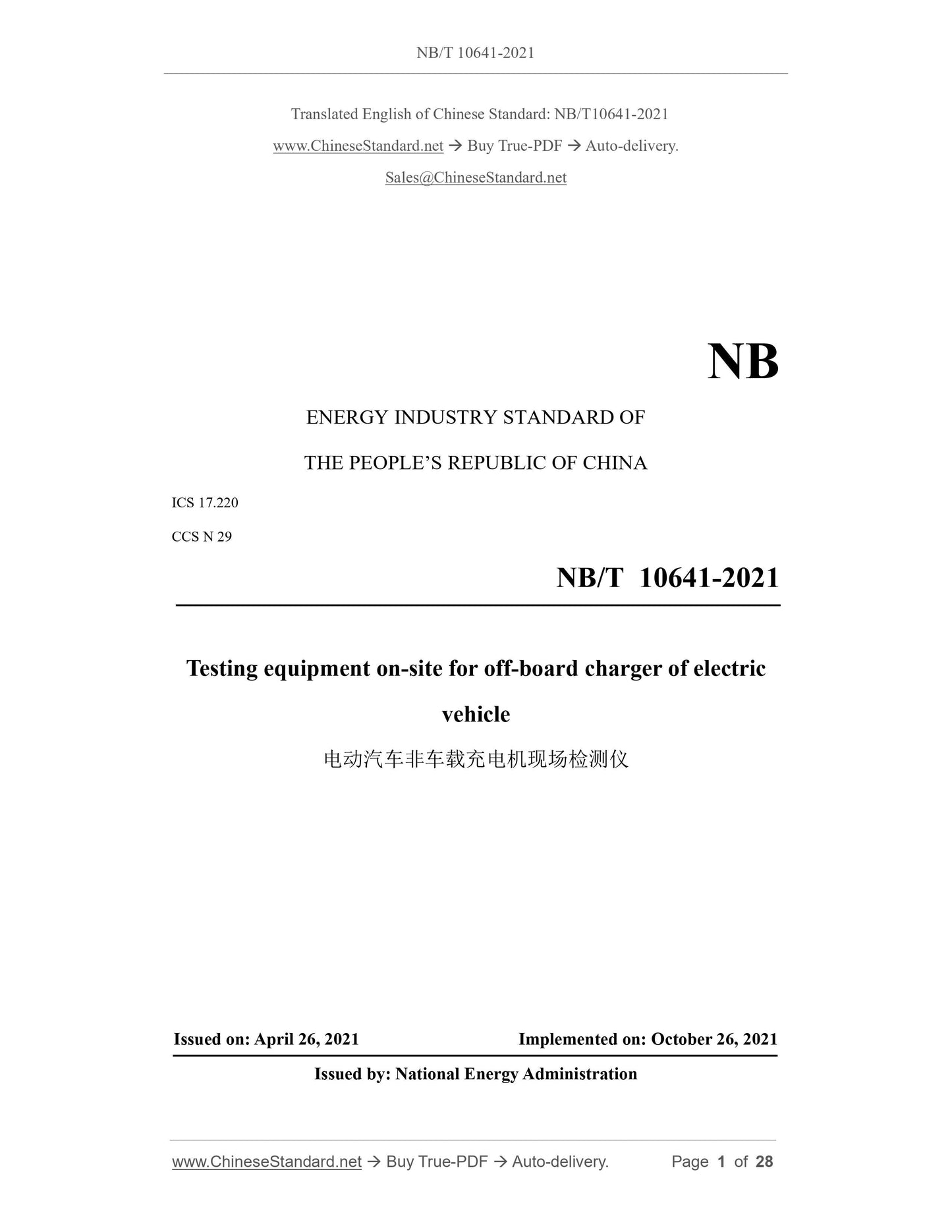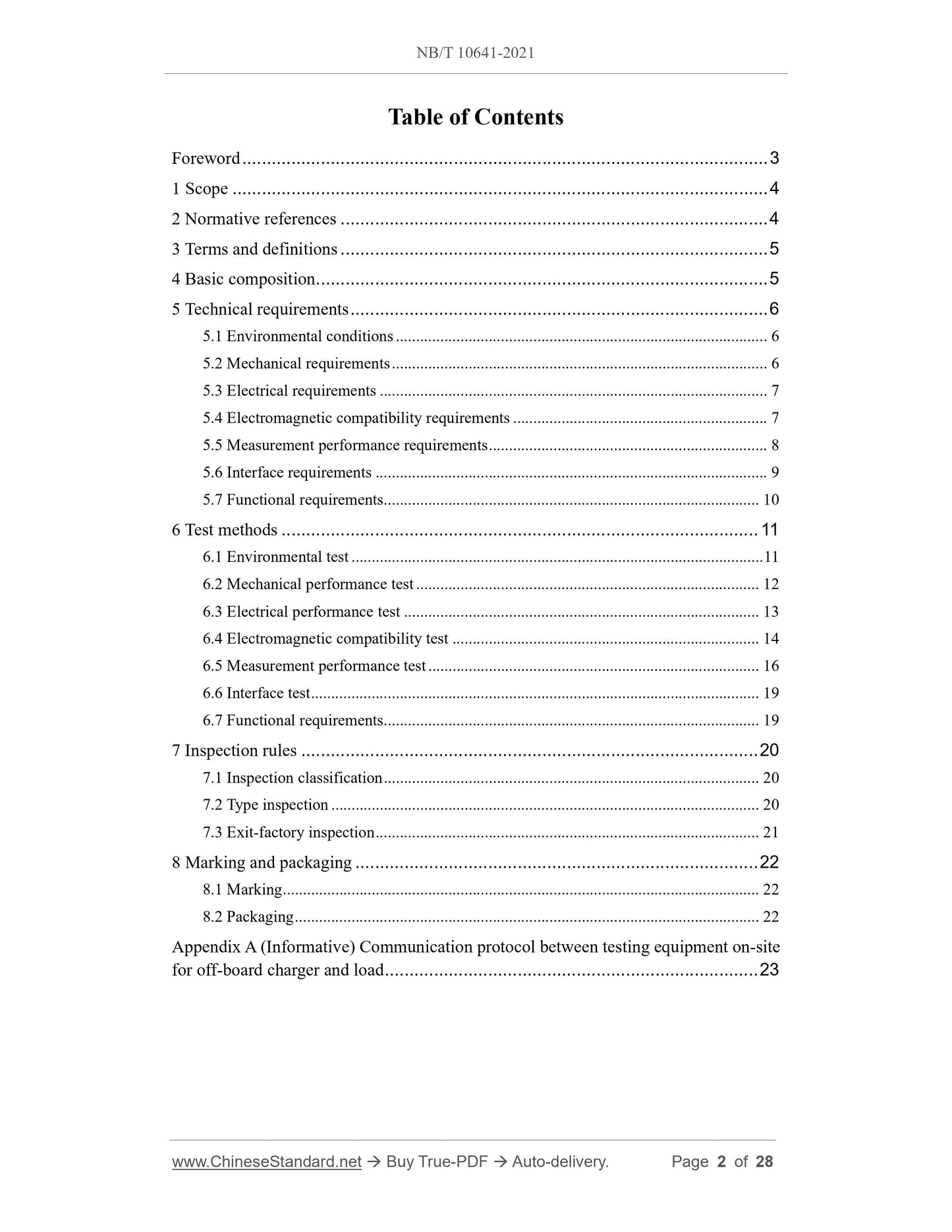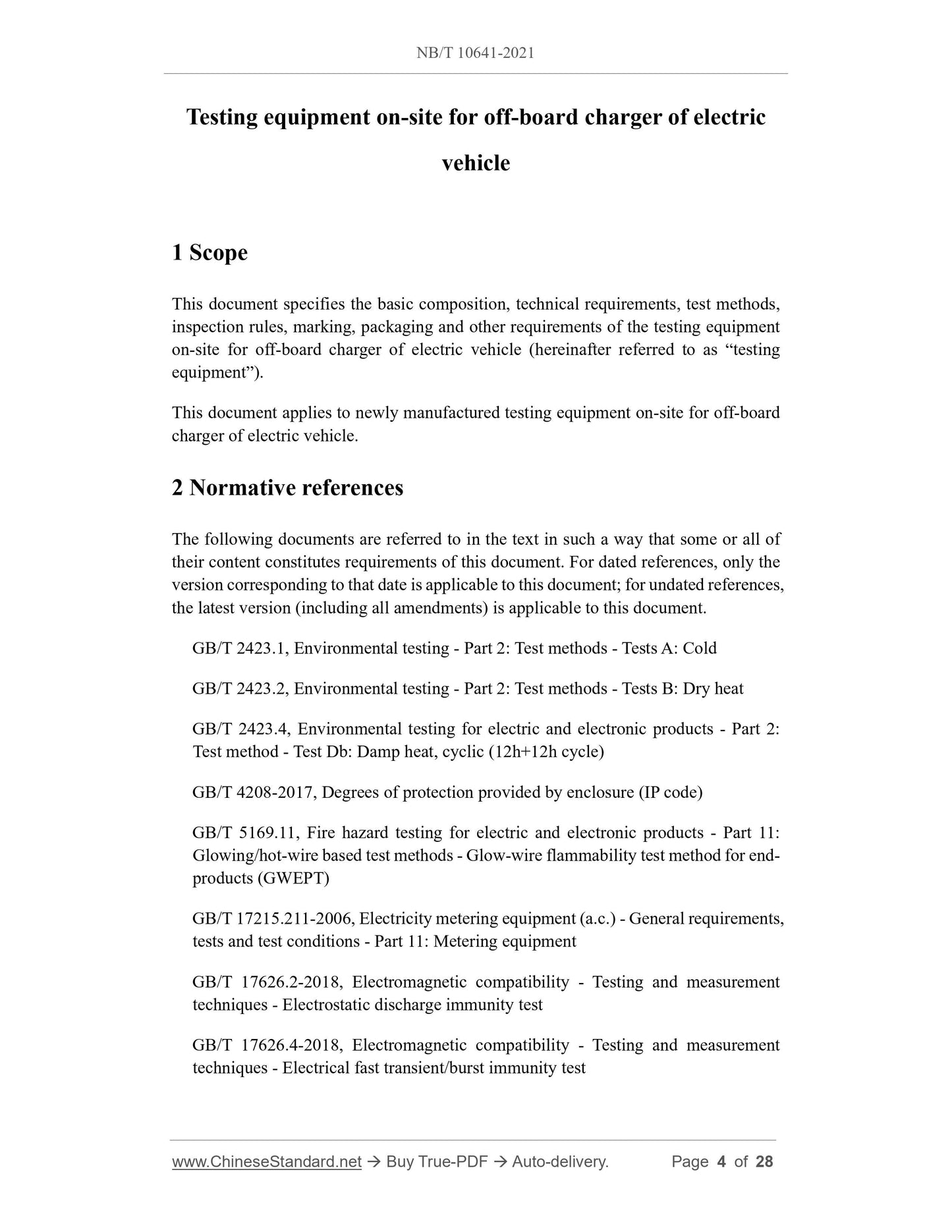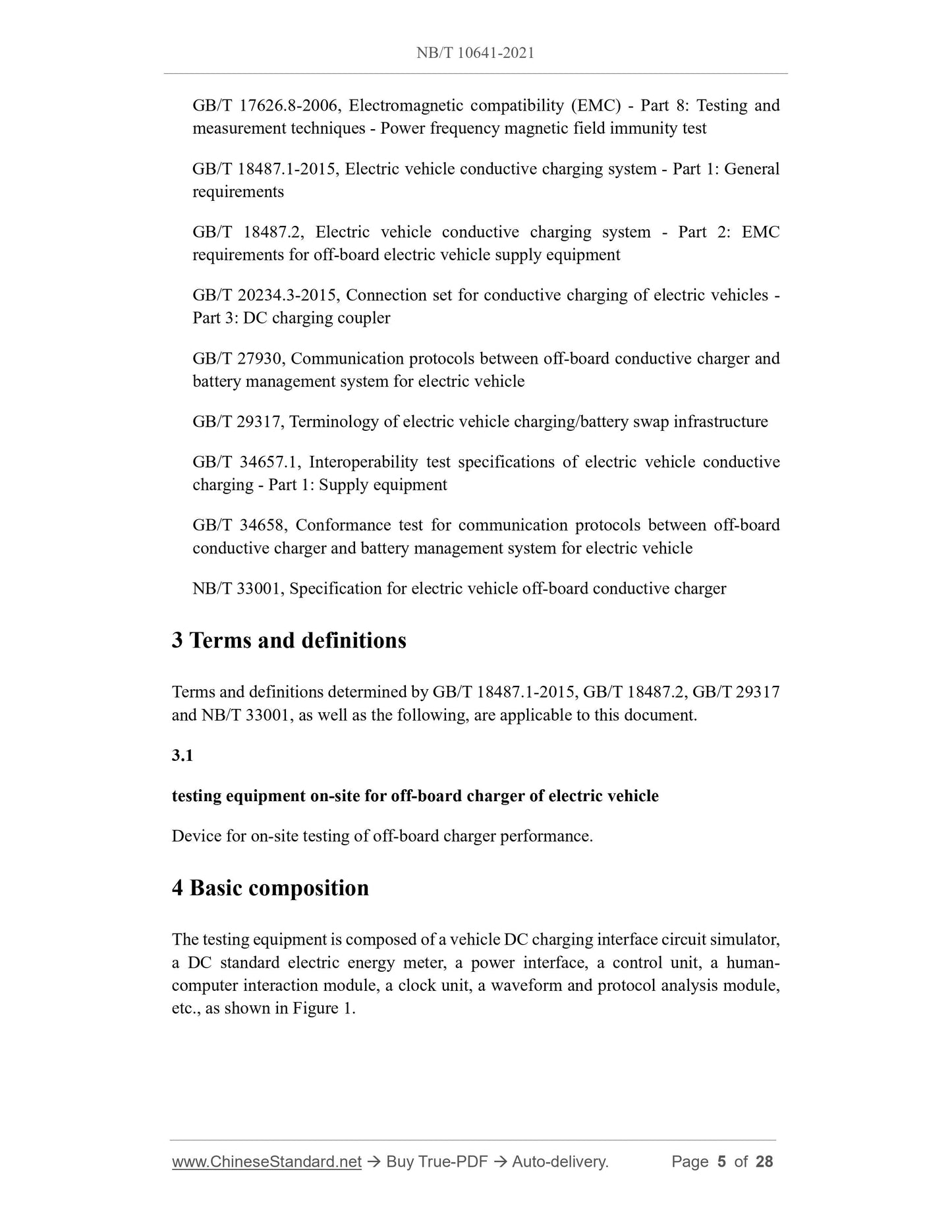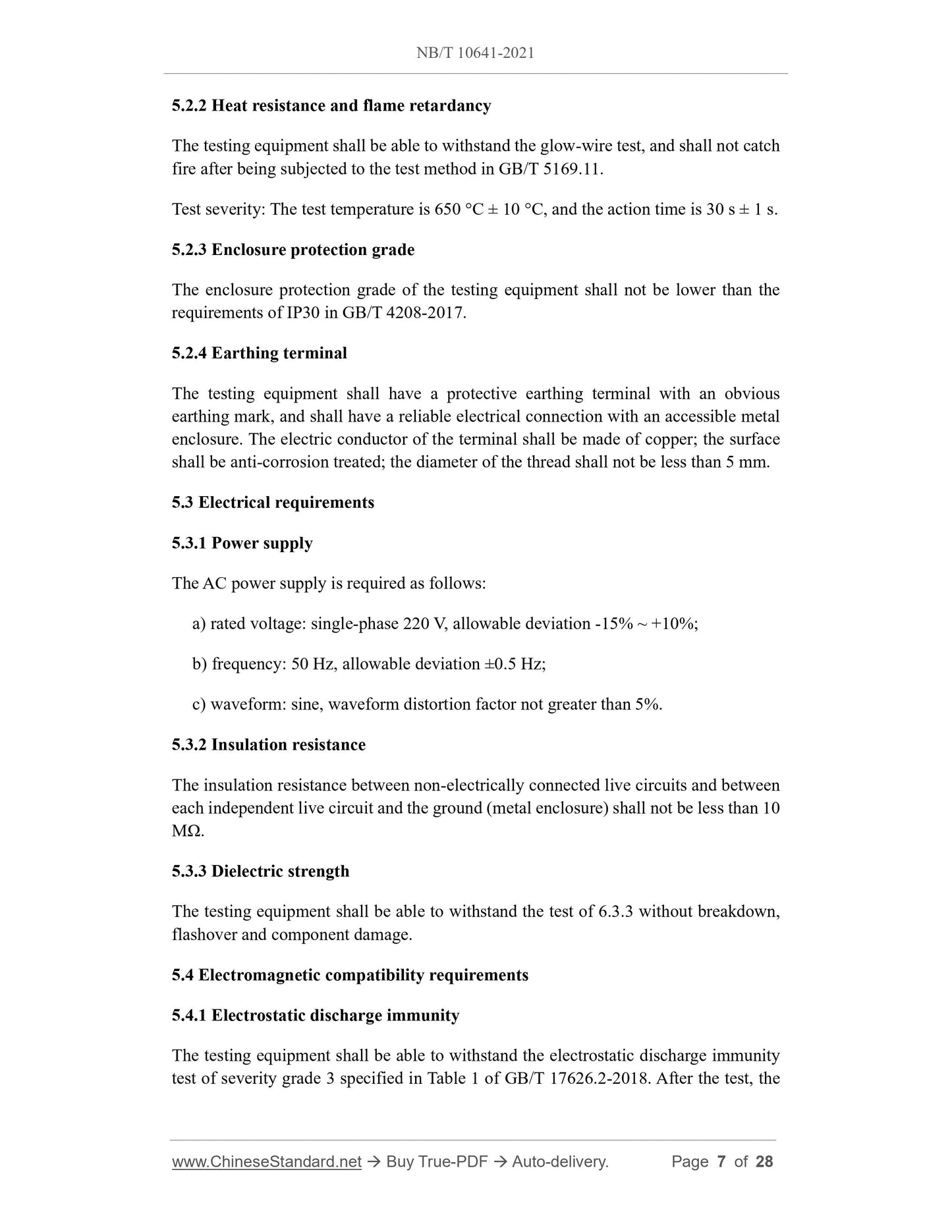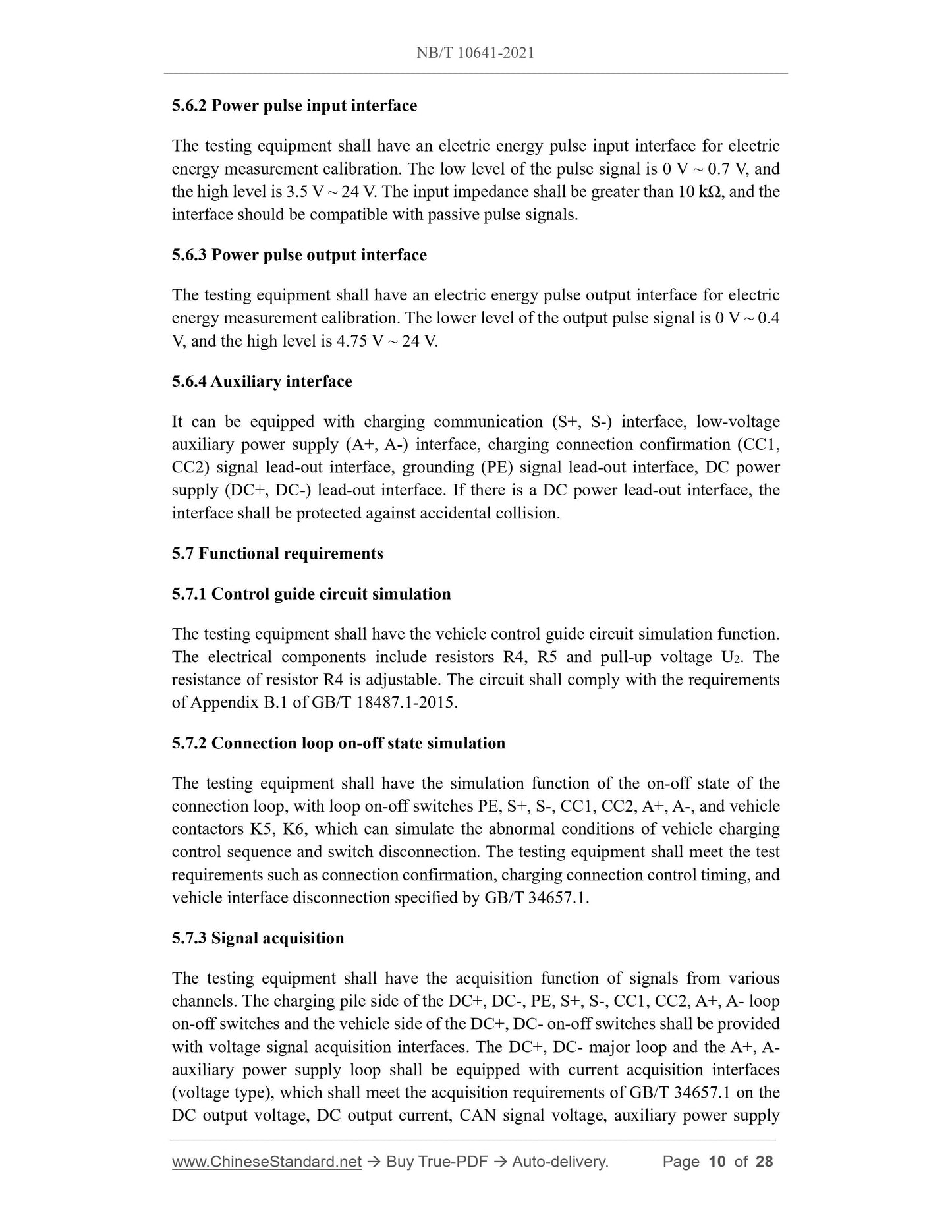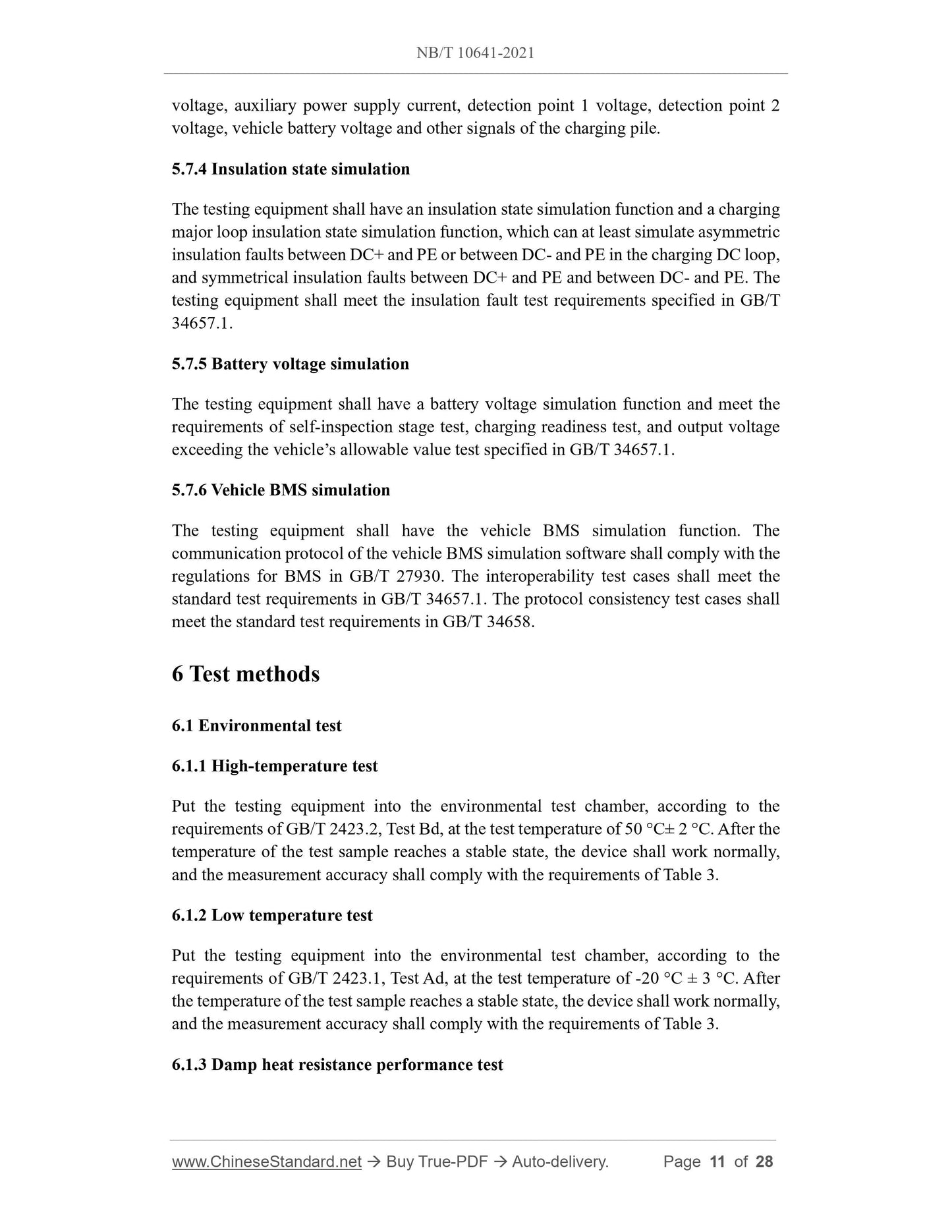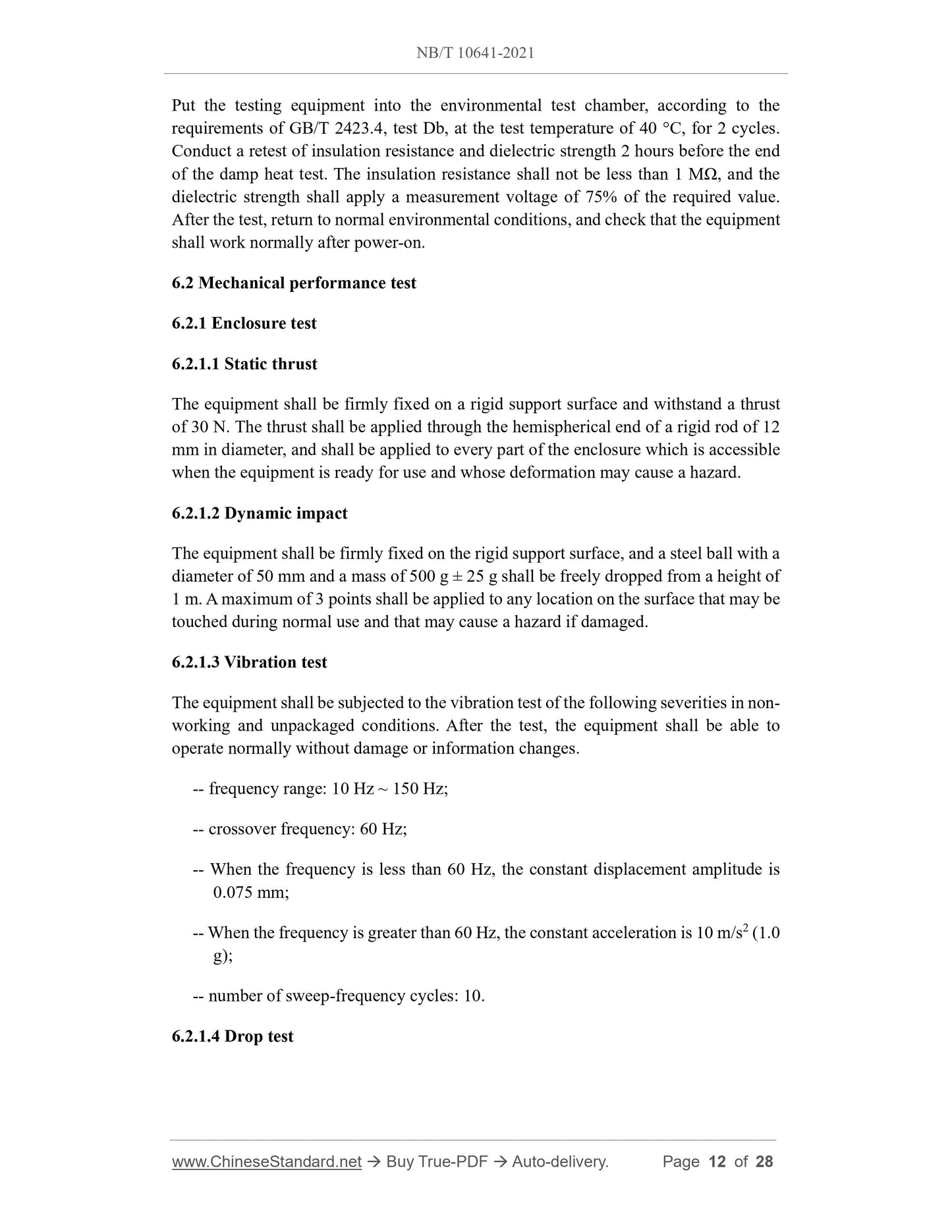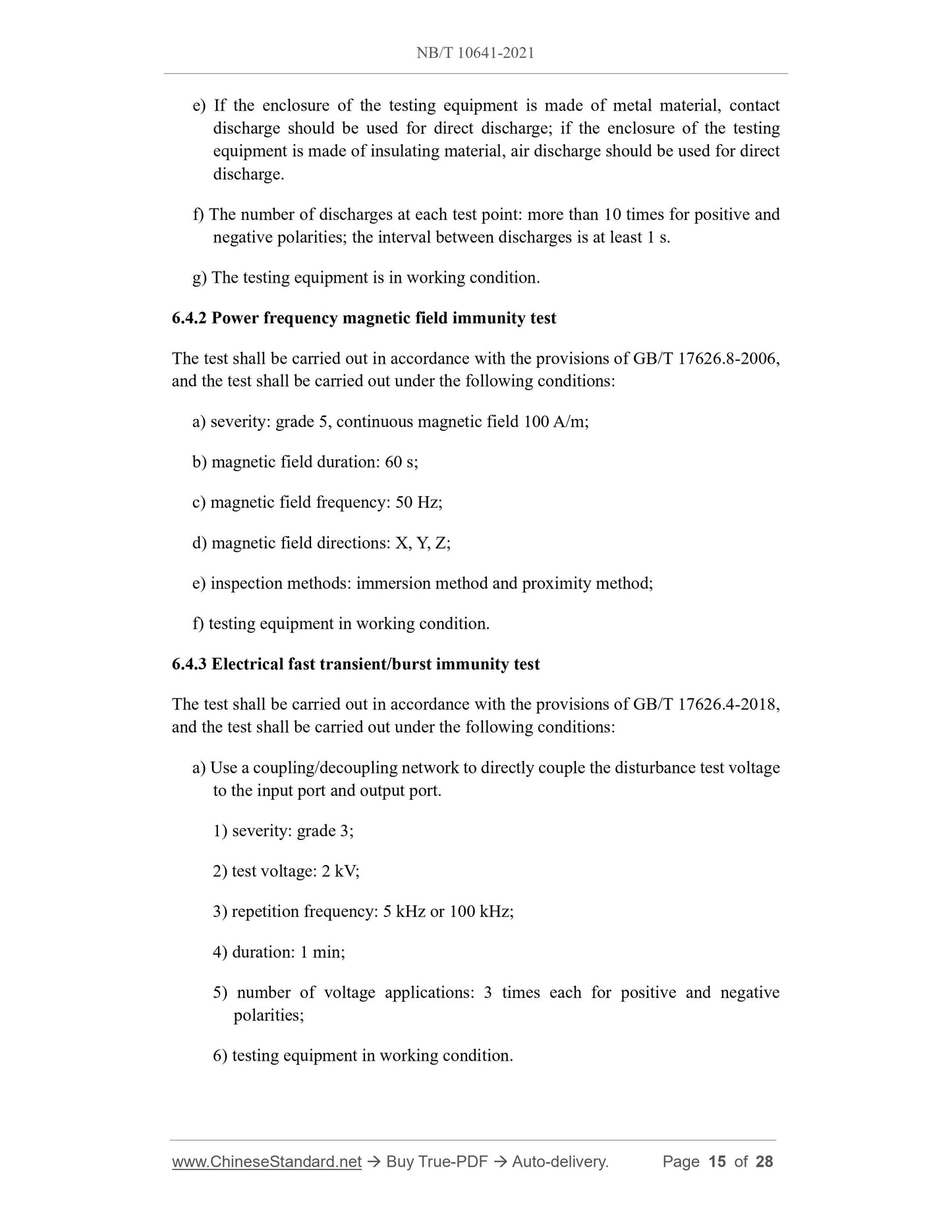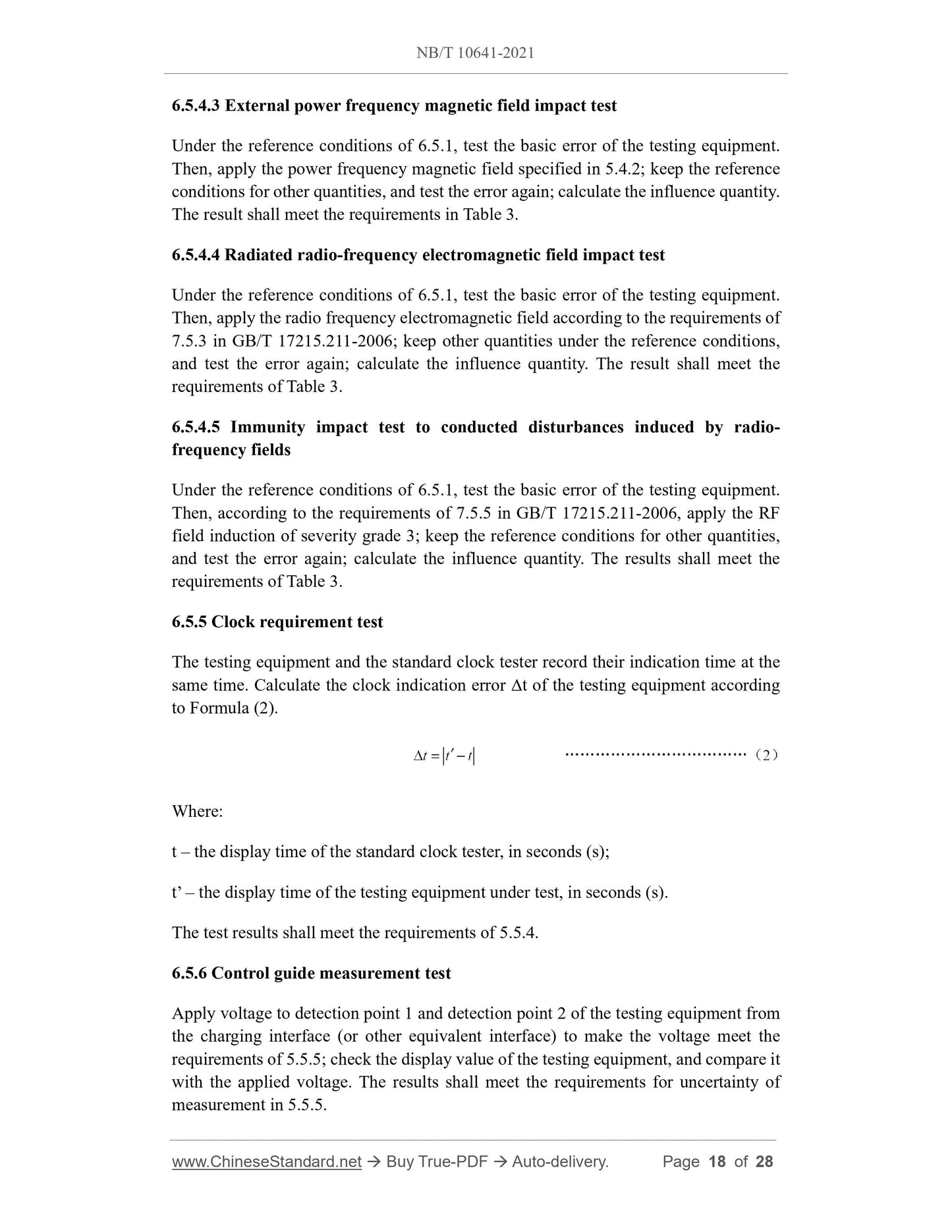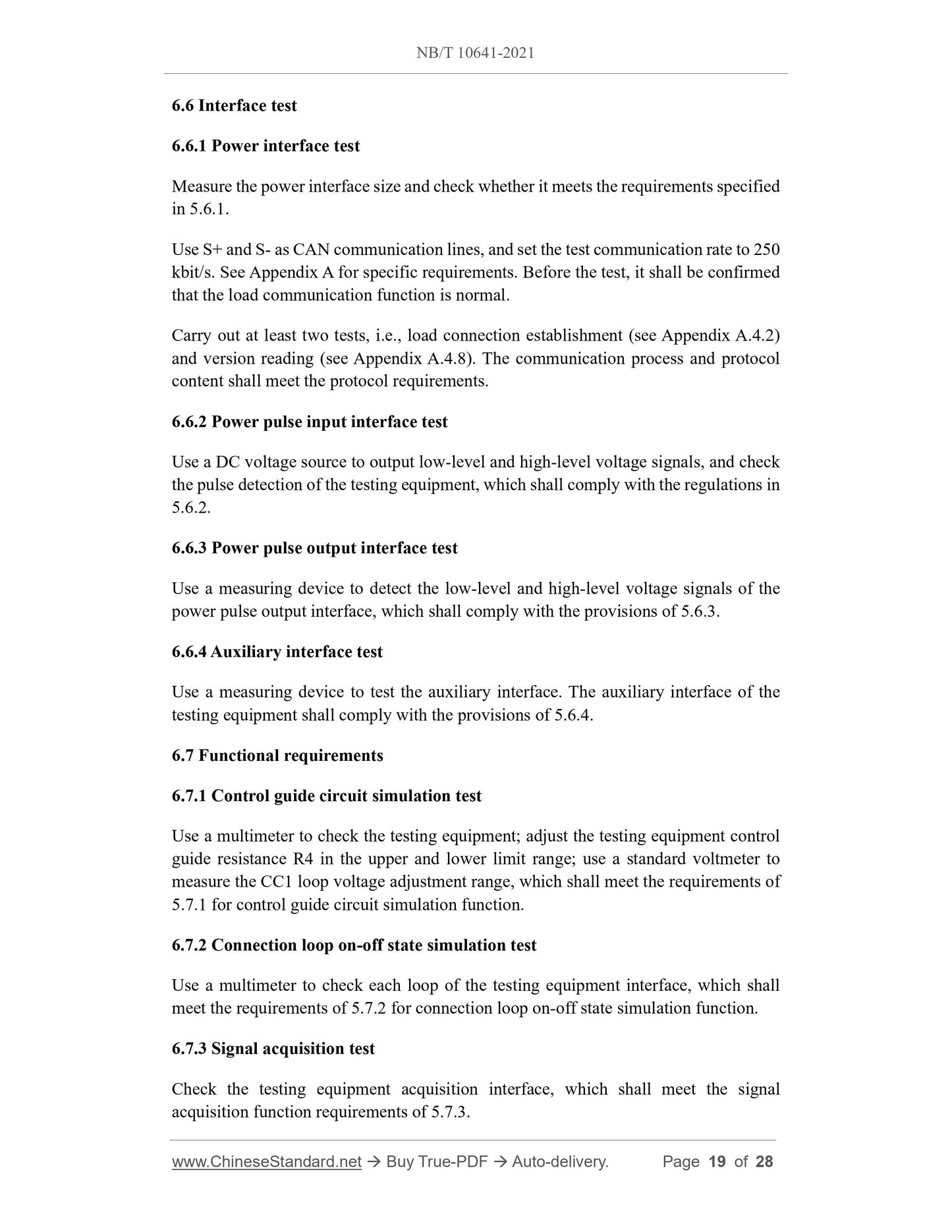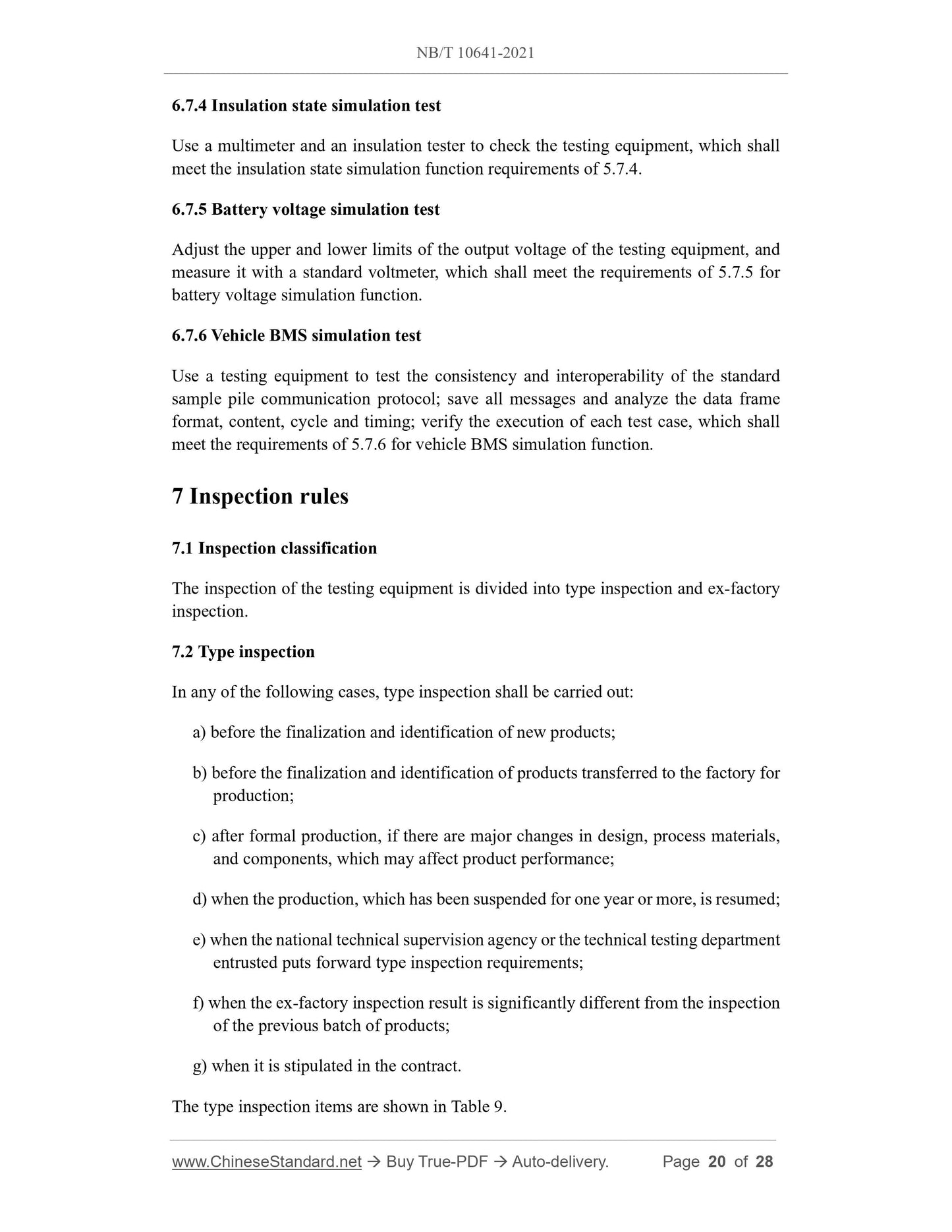1
/
of
12
www.ChineseStandard.us -- Field Test Asia Pte. Ltd.
NB/T 10641-2021 English PDF (NB/T10641-2021)
NB/T 10641-2021 English PDF (NB/T10641-2021)
Regular price
$230.00
Regular price
Sale price
$230.00
Unit price
/
per
Shipping calculated at checkout.
Couldn't load pickup availability
NB/T 10641-2021: Testing equipment on-site for off-board charger of electric vehicle
Delivery: 9 seconds. Download (and Email) true-PDF + Invoice.Get Quotation: Click NB/T 10641-2021 (Self-service in 1-minute)
Newer / historical versions: NB/T 10641-2021
Preview True-PDF
Scope
This document specifies the basic composition, technical requirements, test methods,inspection rules, marking, packaging and other requirements of the testing equipment
on-site for off-board charger of electric vehicle (hereinafter referred to as “testing
equipment”).
This document applies to newly manufactured testing equipment on-site for off-board
charger of electric vehicle.
Basic Data
| Standard ID | NB/T 10641-2021 (NB/T10641-2021) |
| Description (Translated English) | Testing equipment on-site for off-board charger of electric vehicle |
| Sector / Industry | Energy Industry Standard (Recommended) |
| Classification of Chinese Standard | N29 |
| Word Count Estimation | 21,266 |
| Issuing agency(ies) | National Energy Administration |
Share
